Cupping Massage Therapy Is All the Rage, But Is It Right for You?
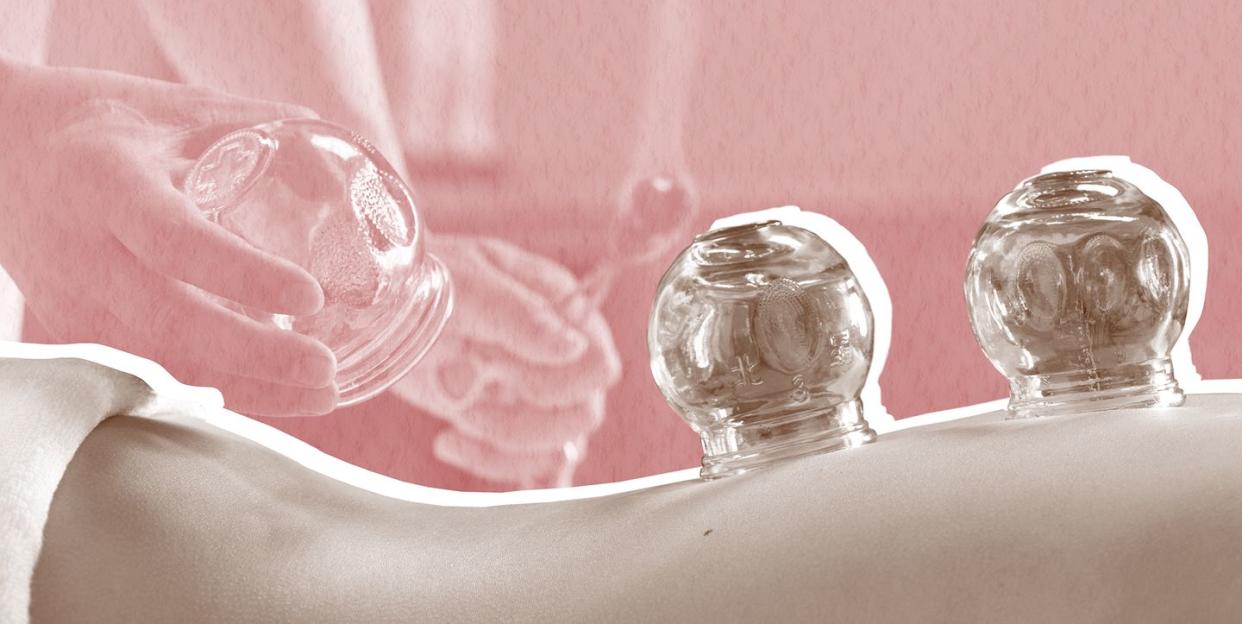
It all started when Gwyneth Paltrow showed up to the 2004 premiere of Anchorman with what looked like circular bruising on her back. But what GP was really baring on her shoulders were the tell-tale signs of a cupping treatment. Naturally, a mediastorm ensued in which the press delved into the eastern practice that left marks on her back, and 5 years later, GP wrote about her love for cupping on her publication, Goop.
Since then, cupping, a Traditional Chinese Medicine therapy has further hit the mainstream, thanks to high profile devotees like Michael Phelps, who used the therapy during the 2016 Olympics, and has become a popular treatment at many a luxury wellness center and spa. But what actually happens when you getting cupping done? Here, we explore the process with the help of licensed acupuncturists and cupping specialists Stefanie DiLibero and Xingjun Huangpu.
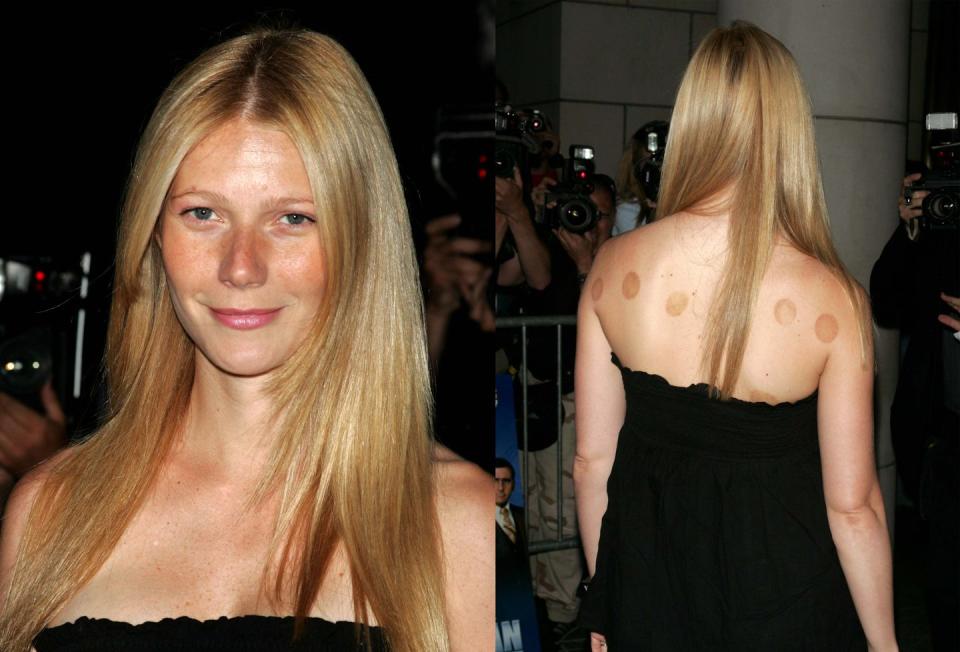
What does cupping massage entail?
Cupping is exactly what it sounds like. According to Stefanie DiLibero, licensed acupuncturist and owner of Gotham Wellness, the treatment involves the placement of "cups" on the body, "whereby the air inside the cups has been removed to create a vacuum that allows the cups to stay attached to the body," she says.
The oxygen is often removed from the cups by the internal application of fire: New York City's Liangste Wellness Center's Cupping Specialist Xingjun Huangpu, explains that during a treatment "the practitioner lights an alcohol-infused cotton ball and places the lit cotton ball in the cup to deoxygenate the cup, and quickly places the cup on the body."
But fire isn't the only method of cupping, DiLibero explains that the use of a suction pump (either separate from the cups themselves or part of the cup) can also be utilized. The cups can also be applied by squeezing the cup itself, placing it on the surface of the body and then releasing the hold so that the skin underneath is drawn inside. She also adds that, "while the fire method of cupping may look the most impressive of the methods, please, do not try this at home!"
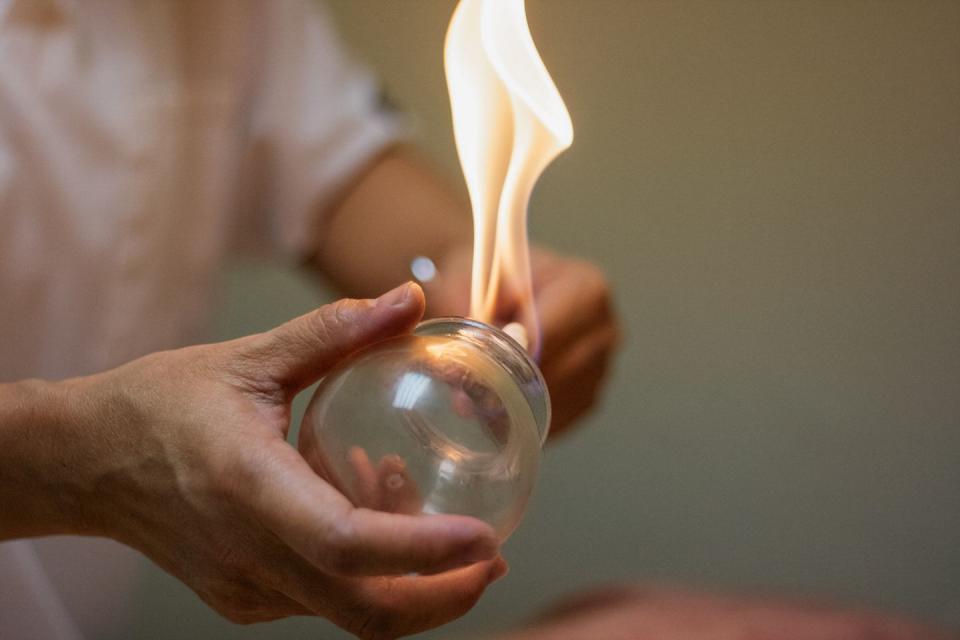
So why place cups on the body?
The procedure is intended to get fluids moving through the body. But why would you want to do that? Simple: in Traditional Chinese Medicine, stagnation or lack of movement of fluids or energy is believed to be the root cause of pain and other health imbalances.
"When you think of a stagnant body of water in nature, it's often a breeding ground for bacteria and parasites, and not a healthy source of water you'd want to drink," says DiLibero. "Breaking up stagnation in the body and getting blood, lymph, and energy to move freely throughout the body can help the body to function and feel better." Another purported benefit of cupping: it stimulates the nerves in the skin, which has a calming effect on the nervous system.
Why might someone want to get cupping done?
You don't just have to have cupping done on your back, as made famous by Gwyneth and Michael Phelps-the treatment can be done on many areas of the body, as well as over specific acupuncture points of meridians. As such, practitioners say it can be helpful for those suffering from pain, stiffness, fevers, lung issues, digestive issues, Bell's palsy, water retention, or menstrual discomfort.
Fun fact: in ancient times originally it was also use as a way to remove venom after snake bites (definitely not doctor-approved) and as a way to treat blisters and boils.
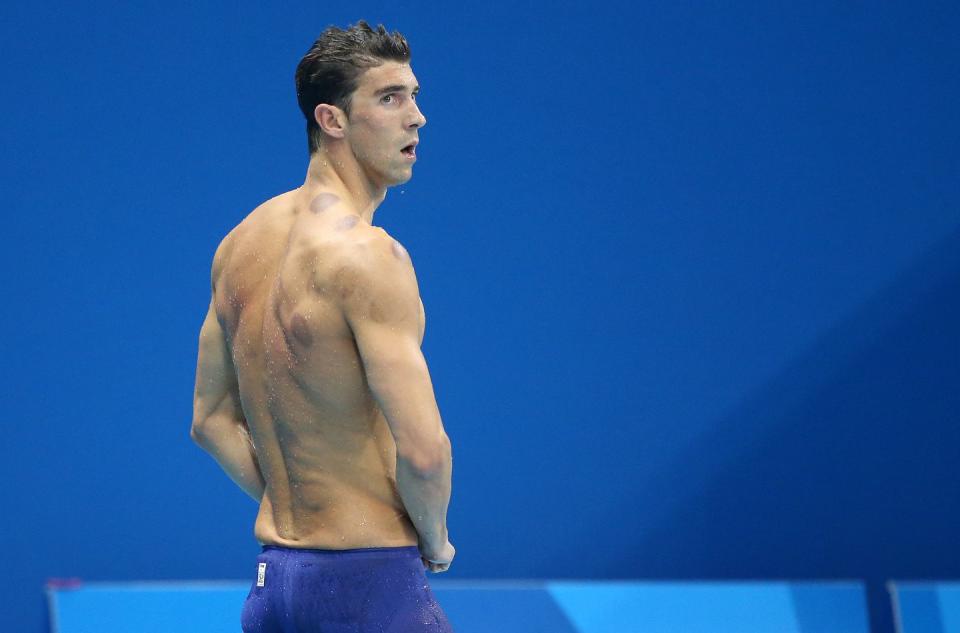
Does cupping hurt?
No! While it looks painful, it's actually quite painless. Think of it like a reverse massage. "Instead of the acupuncturist applying pressure down onto the body, the tissues are drawn into the cup instead. It's the same kind of pressure from a good massage-just in a different direction," says DiLibero.
If you have connective tissue issues or muscle pain, can cupping help?
Yes, cupping increases blood circulation in the skin and muscles, creating a change in the connectivity, in turn helping the tissue to heal and alleviating related chronic pain.
What about scar tissue?
While you do not want to cup over areas that have been recently cut or wounded, or that are being held together with stitches or staples-essentially anything that is not fully healed-once a physician has cleared the patient and the skin has healed, cupping can stimulate the nerves and the circulation of the blood and lymph surrounding the scar tissue; however, according to DiLibero, acupuncture and LED would be a preferable way to treat this type of condition.
Is cupping helpful for people with headaches?
It can help relax the muscles that can be involved in creating the tension that rises to the head, as well as drawing sensation from the area away from the tension.
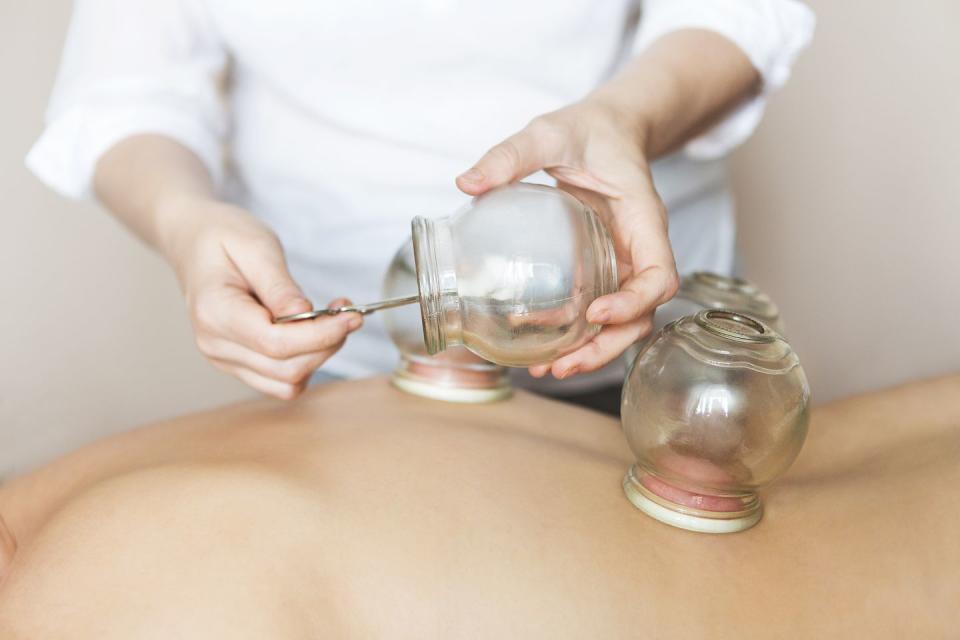
What is the difference between still cupping and moving cupping?
With still cupping, cups are placed onto one location of the body and left there. The pros say this process is helpful to treat certain acupuncture points, specific areas of imbalance or tension, and rounded areas where suction would be lost if the cups were moved.
Moving cupping, on the other hand, involves an oil or lotion that is placed on the body, allowing the cup, with suction remaining engaged, to be moved over a larger area.
In her own practice, DiLibero uses moving cupping as a "great way to cover a larger area of the body, predominately on the back, to treat conditions locally, as well as in other areas of the body, due to the location of acupuncture points on the back that treat other systems of the body."
Are there any special measures someone getting cupping performed on them should take?
Huangpu advises that a cupping treatment should be around 20 minutes long and the customer should not shower for around 4 to 5 hours after the treatment, if possible.
('You Might Also Like',)

